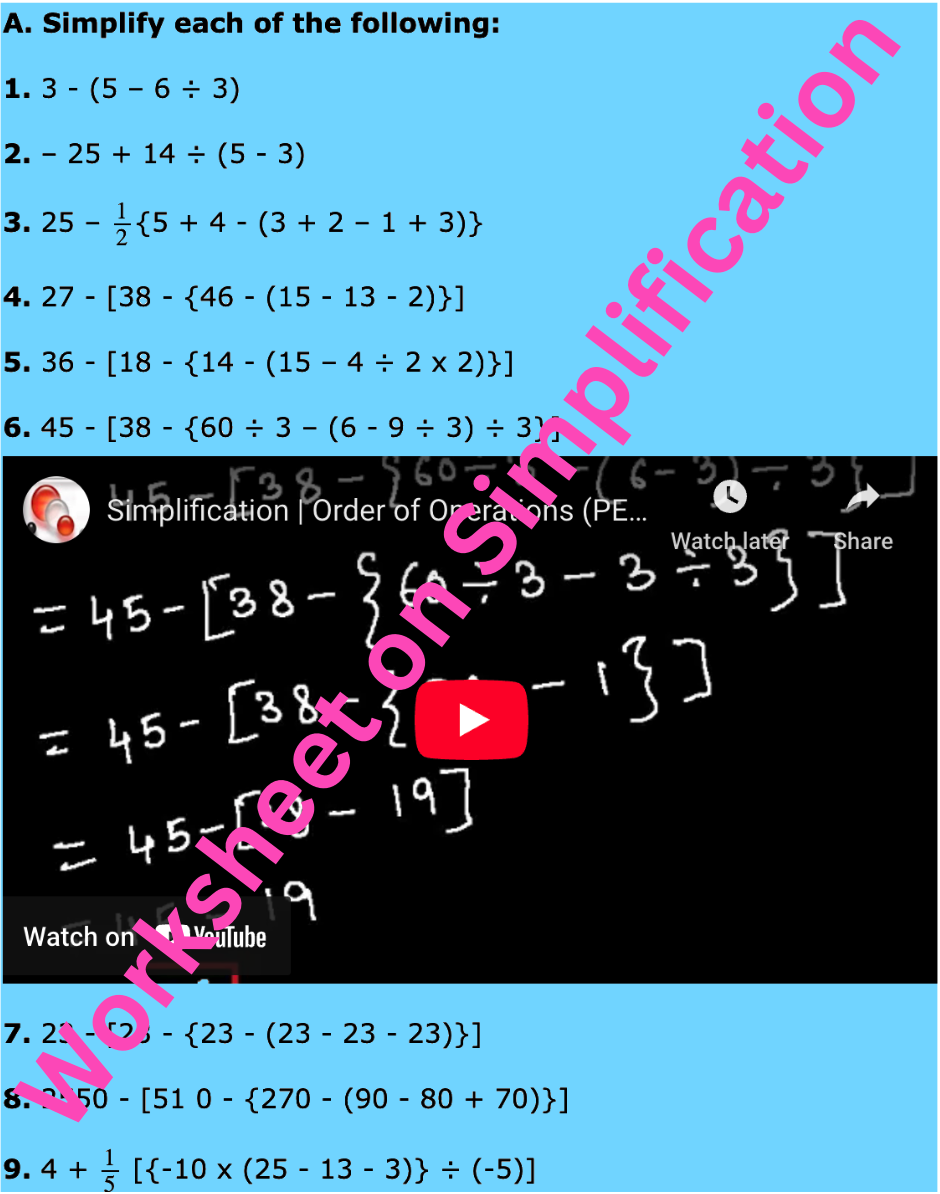Distance Formula in Geometry
We will discuss here how to use the distance formula in geometry.
1. Show that the points A (8, 3), B (0, 9) and C (14, 11) are the vertices of an isosceles right-angled triangle.
Solution:
AB = √(0−8)2+(9−3)2
= √(−8)2+(6)2
= √64+36
= √100
= 10 units.
BC = √(14−0)2+(11−9)2
= √142+(2)2
= √196+4
= √200
= 10√2 units.
CA = √(8−14)2+(3−11)2
= √(−6)2+(−8)2
= √36+64
= √100
= 10 units.
AB2 + CA2 = 100 + 100 = 200 = BC2
BC2 = AB2 + CA2 ⟹ the triangle is right-angled triangle.
and, AB = CA ⟹ the triangle is isosceles.
Here, the triangle ABC is an isosceles right-angled triangle.
2. The point A (2, -4) is reflected in the origin on A’. The point B (-3, 2) is reflected in the x-axis on B’. Compare the distances AB = A’B’.
Solution:
The point A (2, -4) is reflected in the origin on A’.
Therefore, the co-ordinates of A’ = (-2, 4)
The point B (-3, 2) is reflected in the x-axis on B’
Therefore, the co-ordinates of B’ = (-3, -2)
Now, AB = √(2−(−3))2+(−4−2)2
= √(5)2+(−6)2
= √25+36
= √61 units.
A’B’ = √(−2−(−3))2+(4−(−2))2
= √12+62
= √1+36
= √37 units.
3. Prove that the points A (1, 2), B (5, 4), C (3, 8) and D (-1, 6) are the vertices of a rectangle.
Solution:
Let A (1, 2), B (5, 4), C (3, 8) and D (-1, 6) be the angular points of the quadrilateral ABCD.
Join AC and BD.
Now AB = √(5−1)2+(4−2)2
= √42+22
= √16+4
= √20
= √2×2×5
= 2√5 units.
BC = √(3−5)2+(8−4)2
= √(−2)2+42
= √4+16
= √20
= √2×2×5
= 2√5 units.
CD = √(−1−3)2+(6−8)2
= √(−4)2+(−2)2
= √16+4
= √20
= √2×2×5
= 2√5 units.
and DA = √(1+1)2+(2−6)2
= √22+(−4)2
= √4+16
= √20
= √2×2×5
= 2√5 units.
Thus, AB = BC = CD = DA
Diagonal AC = √(3−1)2+(8−2)2
= √22+(−6)2
= √4+36
= √40
= √2×2×2×5
= 2√10 units.
Diagonal BD = √(−1−5)2+(6−4)2
= √(−6)2+22
= √36+4
= √40
= √2×2×2×5
= 2√10 units.
Therefore, Diagonal AC = Diagonal BD
Thus ABCD is a quadrilateral in which all sides are equal and the diagonals are equal.
Hence required ABCD is a square.
● Distance and Section Formulae
- Distance Formula
- Distance Properties in some Geometrical Figures
- Conditions of Collinearity of Three Points
- Problems on Distance Formula
- Distance of a Point from the Origin
- Distance Formula in Geometry
- Section Formula
- Midpoint Formula
- Centroid of a Triangle
- Worksheet on Distance Formula
- Worksheet on Collinearity of Three Points
- Worksheet on Finding the Centroid of a Triangle
- Worksheet on Section Formula
10th Grade Math
From Worksheet on Distance Formula to HOME PAGE
Didn't find what you were looking for? Or want to know more information about Math Only Math. Use this Google Search to find what you need.
Recent Articles
-
Counting Numbers from 1 to 50 | Match the Number | Missing Numbers
Apr 04, 25 03:46 PM
In counting numbers from 1 to 50, recognize the numbers, count and then join the numbers in the correct number order. Here we mainly need eye-hand coordination to draw the picture and maintain the num -
Counting Eleven to Twenty with Numbers and Words |Numbers from 11 - 20
Apr 04, 25 03:21 PM
Counting eleven to twenty with numbers and words are explained below. One ten and one more is eleven. Eleven comes after ten. One ten and two more is twelve. Twelve comes after eleven. -
5th Grade BODMAS Rule Worksheet | PEMDAS | Order of operations|Answers
Apr 03, 25 03:11 PM
In 5th Grade BODMAS Rule Worksheet you will get different types of problems on mathematical expressions involving different operations, mathematical expression with 'brackets' and 'of' and simplifying… -
Worksheet on Simplification | Simplify Expressions | BODMAS Questions
Apr 03, 25 02:58 PM
In worksheet on simplification, the questions are based in order to simplify expressions involving more than one bracket by using the steps of removal of brackets. This exercise sheet -
Divisible by 2 Video |Test of Divisibility by 2 Trick| Rules| Examples
Apr 03, 25 10:25 AM
A number is divisible by 2 if the digit at unit place is either 0 or multiple of 2. So a number is divisible by 2 if digit at its units place is 0, 2, 4, 6 or 8.





New! Comments
Have your say about what you just read! Leave me a comment in the box below. Ask a Question or Answer a Question.